Oral
Vessels & Flow
ISMRM & ISMRT Annual Meeting & Exhibition • 10-15 May 2025 • Honolulu, Hawai'i

| 08:15 |
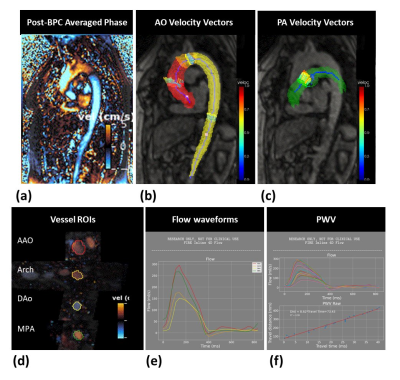 |
0046. Fully
Automated Inline 4D Flow MRI Visualization and Flow Analysis
N. Jin, H. Berhane, R. Davids, K. Binzel, J. Varghese, J.
Baraboo, X. Bi, K. Chow, M. Markl
Siemens Medical Solutions USA, Inc., Malvern, United States
Impact: This automated inline 4D Flow MRI framework
simplifies 4D Flow post-processing and provides immediate
results from hemodynamic analysis on the scanner. It
provides the potential to increase the accessibility of 4D
flow and improve its translation into routine clinical
practice.
|
| 08:27 |
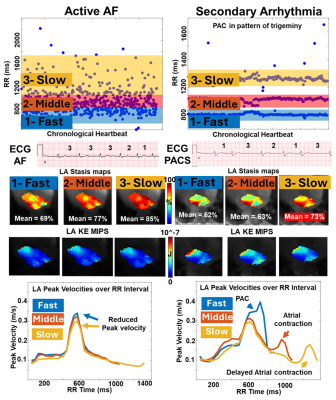 |
0047. Arrhythmia
Resolved 5D Flow Imaging Decodes the Effect of Arrhythmias on
Flow Energetics
J. Baraboo, T. Nallamothu, E. Weiss, D. Dushfunian, R.
Passman, D. Kim, D. Lee, C. Roy, M. Stuber, M. Markl
Northwestern University, Chicago, United States
Impact: 5D flow MRI (5D=x,y,z,t,heart rate) successfully
resolved heart rate variable effects on atrial blood flow of
multiple arrhythmias in AF patients. Impact of secondary
arrhythmias in AF patients and their contribution to stroke
risk may be better understood.
|
| 08:39 |
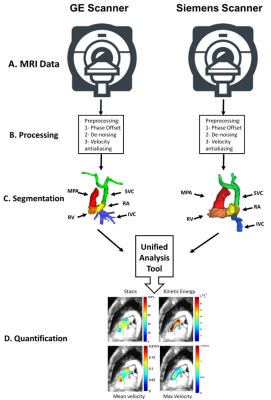 |
0055. Assessing
Right Heart Hemodynamics using 4D flow MRI in Chronic
Obstructive Pulmonary Disease: The SPIROMICS HF Study
D. Dushfunian, T. W. Houston, M. Markl, O. Wieben, M. R.
Prince, W. Shen, J. Carr, D. Bluemke, M. Backman, S. R.
Jambawalikar, B. Ambale Venkatesh, J. Lima, P. Agarwal, J.
P. Finn, C. B. Cooper, Y. J. Lee, J. Schroeder, D. W.
Kitzman, R. G. Barr, S. Investigtors
Northwestern University, chicago, United States
Impact: We present the potential of 4D flow MRI to
non-invasively assess the cardiopulmonary hemodynamic
interaction in COPD which may allow early detection and
management of subclinical heart failure secondary to COPD.
|
| 08:51 |
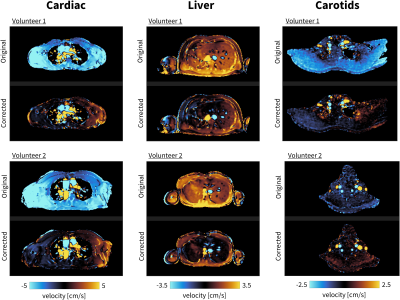 |
0049. Prediction
and Retrospective Correction of 2D PC-MRI Background Phase
Errors Using the Gradient Impulse Response Function
M. Loecher, D. Ennis
Stanford University, Stanford, United States
Impact: We tested a gradient impulse response function
(GIRF) based prediction method to correct background phase
errors in 2D PC-MRI data. Background phase errors were
reduced by 75.7% in static phantom experiments and 65.2% in
the volunteer data.
|
| 09:03 |
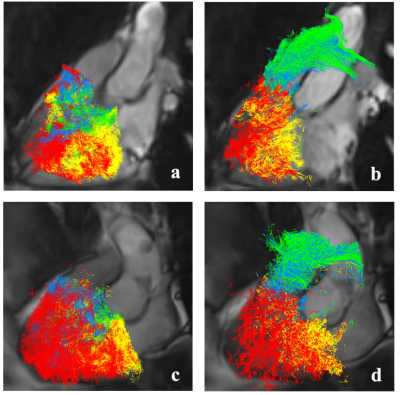 |
0050. Evaluating Right
Ventricular Hemodynamics in Patients with Repaired Tetralogy of
Fallot via Four-Dimensional Flow CMR
J. Xie, Y. Ge, G. Zhang, J. An, G. Daniel
Fuwai Henan Hospital,Chinese Academyof Medical Sciences, Zhengzhou, China
Impact: Four-dimensional flow cardiac magnetic
resonance offers a novel imaging biomarker for assessing
declines in right ventricular efficiency and monitoring
disease progression in rTOF patients, with robust potential
for use in patient follow-up and disease surveillance.
|
| 09:15 |
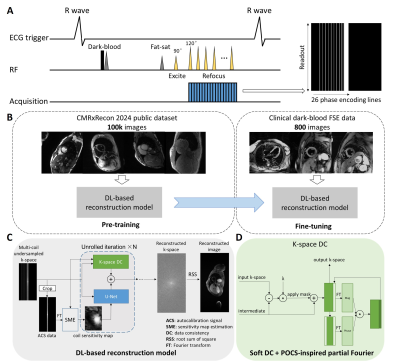 |
0051. Single-shot
High-resolution Free-breathing Cardiac Dark-blood Imaging Based
on Model-Incorporated Transfer Learning

Z. Xue, Y. Gong, J. Hu, Z. Zhou, W. Jin, S. Hua, C. Hu
National Engineering Research Center of Advanced Magnetic Resonance Technologies for Diagnosis and Therapy, School of Biomedical Engineering, Shanghai Jiao Tong University, Shanghai, China
Impact: The proposed single-shot imaging overcome the
challenge of conventional cardiac T2W DB-FSE. It has the
potential for clinical application in the assessment of
myocardium edema on patients having trouble with long
breath-holding.
|
| 09:27 |
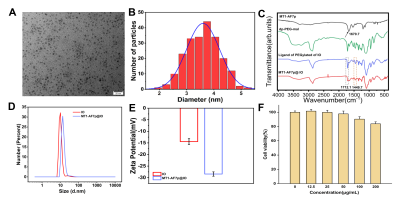 |
0052. Inflammatory-targeted
iron oxide nanoparticles contrast agent for magnetic resonance
imaging of atherosclerotic plaques

L. Ma, N. Gao, T. Gong, X. Song, H. Fan, H. Zhang
Center for Biomedical Imaging Research, Department of Biomedical Engineering, Tsinghua University, Beijing, China
Impact: This study develops an imaging nanoprobe to
enable early, precise imaging and non-invasive dynamic
monitoring of the morphology and compositional properties of
AS plaques. It has important clinical potential in
facilitating early diagnosis, treatment, and therapeutic
evaluation of cardiovascular diseases.
|
| 09:39 |
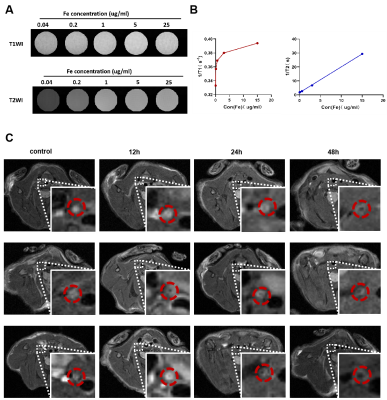 |
0053. Engineered
Biomimetic Iron Oxide Nanoparticles for Early MR Diagnosis and
Intervention of Atherosclerotic Vulnerable Plaques
y. wang, q. zhou, X. Zhao, D. Mu
Department of Radiology, Nanjing Drum Tower Hospital Clinical College of Jiangsu University, No. 321 Zhongshan Road, Nanjing, 210008, China., Nanjing, China
Impact: We prepared biomimetic contrast agent to improve
the targeting specificity of vulnerable plaques, which is a
major innovation in the application of bionic nanotechnology
to atherosclerosis. Meanwhile, this study provided ideas for
the integration diagnosis and treatment of contrast agents.
|
| 09:51 |
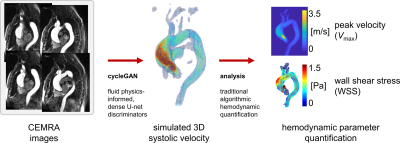 |
0054. Predicting
Adverse Outcomes for BAV Aortopathy Patients by Fluid
Physics-Informed Velocity Estimation from Contrast-Enhanced MR
Angiography
E. Johnson, H. Berhane, A. Dehadrai, A. Maroun, D.
Dushfunian, B. Allen, M. Markl
Northwestern University, Chicago, United States
Impact: Strong performance predicting adverse outcomes
with estimates of hemodynamics derived from easy-to-acquire
CEMRA images suggests high potential clinical utility in
management of BAV aortopathy, and this may offer new and
powerful ways to stratify risk in patients with BAV
aortopathy.
|
| 10:03 |
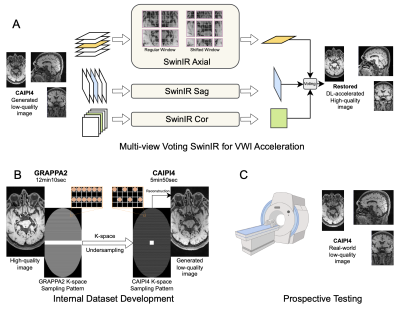 |
0048. Vessel
wall imaging-dedicated deep learning (VWI-DL): Toward a 5-min
clinically robust MR protocol

P. Wang, J. Chen, Z. Wang, N. Sheikh-Bahaei, S. Cen, Q.
Yang, W. Mack, Z. Fan
University of Southern California, Los Angeles, United States
Impact: The VWI-dedicated deep learning model enables
faster data acquisition with preserved image quality
compared to standard clinical protocols, which may enhance
VWI’s robustness and clinical throughput and thus promote
its widespread clinical adoption.
|
The International Society for Magnetic Resonance in Medicine is accredited by the Accreditation Council for Continuing Medical Education to provide continuing medical education for physicians.